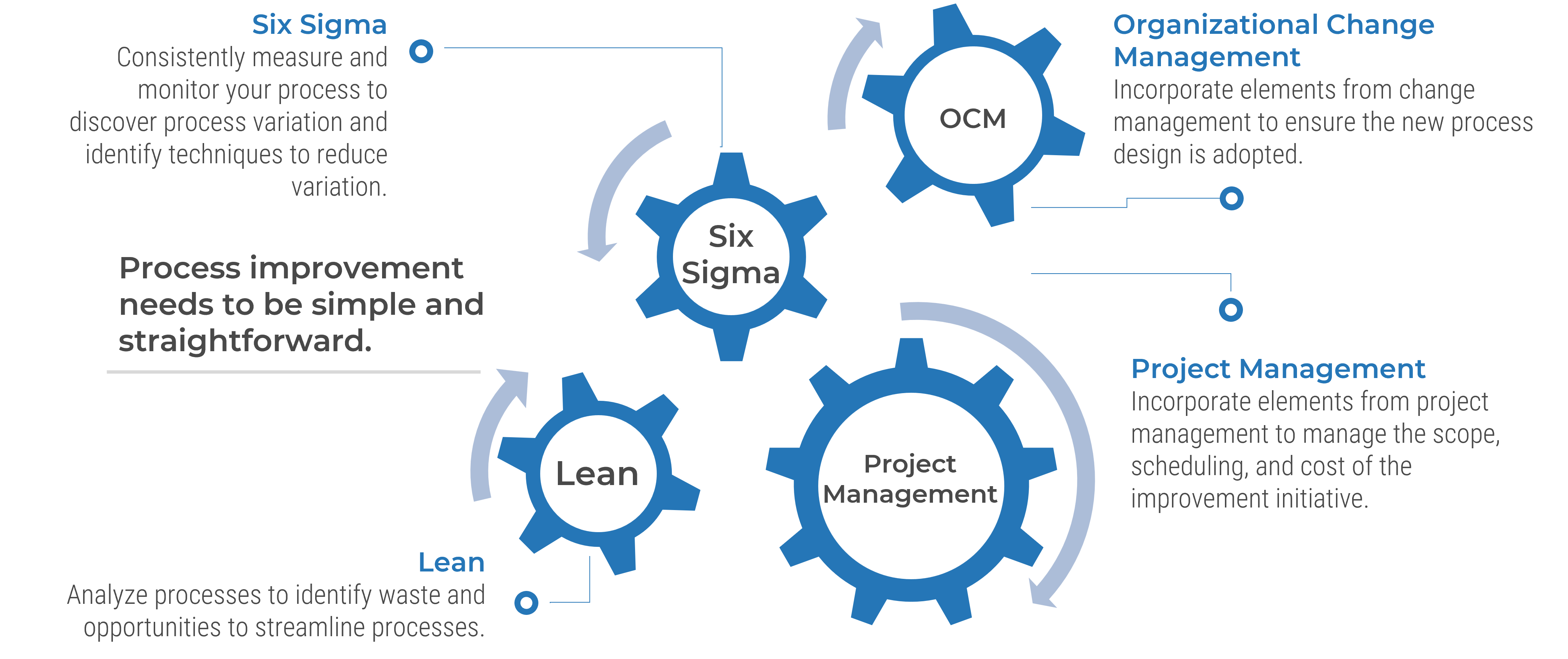Process improvement is simultaneously the most significant and most dreaded part of IT management. CIOs, IT leaders, and IT teams are increasingly being asked to do more with less – leaving little time to tackle challenging process improvements. Our workshop-driven blueprint accelerates time to improvement, making a complete solution to an unoptimized process achievable in days instead of months.
Process improvement isn’t just about fixing inefficiencies – it’s about fundamentally transforming how you create and deliver value, balance innovation with reliability, speed with quality, and complexity with clarity. Supercharge your process improvement capabilities using this blueprint within a tailored Info-Tech workshop. Designed to help you put your IT Management and Governance Diagnostic results into action or as part of your own process improvement initiatives, this workshop-driven blueprint can show you what to stop and what to start doing to tackle IT process challenges.
1. Stop fighting fires and start preventing them.
IT teams are often busy keeping the lights on and tackling issues as they arise, which doesn’t leave time or resources for improving processes. As IT finds itself increasingly embedded in the function and success of an organization, IT needs to put its own oxygen mask on first – taking better care of itself so it can better serve the organization in turn.
2. Stop settling for “good enough” and start raising the bar on efficiency.
Inefficiencies are everywhere. The goal is not to eliminate all waste, but to minimize it where possible. Rethink the processes you’ve traditionally accepted as “good enough” and recognize that there’s always room for improvement.
3. Stop one-off projects and start continuously improving.
Challenge the misconception that process improvements are permanent and self-sustaining. Process improvement is iterative – relegating it to one-off projects leads to stilted development and disconnected processes. Build a culture of continuous improvement on a foundation of proactive planning and ongoing investment in change.
Use our workshop-driven blueprint to dramatically accelerate your process improvements.
Use this blueprint as a comprehensive basis for an Info-Tech Rapid IT Process Improvement workshop. In conjunction with a workshop, this blueprint will help you rapidly identify key pains in your IT processes, get all contributors in the same room to address them, and provide support for continuous improvement into the future.
- Identify and select key pains in your IT processes to prepare and prioritize improvements.
- Optimize your processes by identifying process waste and defining your ideal future state.
- Implement, monitor, and sustain your process improvements by creating an action plan and roadmap.
Workshop: Rapidly Improve Your IT Processes
Workshops offer an easy way to accelerate your project. If you are unable to do the project yourself, and a Guided Implementation isn't enough, we offer low-cost delivery of our project workshops. We take you through every phase of your project and ensure that you have a roadmap in place to complete your project successfully.
Module 1: Getting Ready for Process Improvement
The Purpose
Key Benefits Achieved
Activities
Outputs
Debrief your M&G diagnostic (Route 1)
Assess your readiness for process improvement
Select and prioritize your processes (Route 2)
Define your process improvement guiding principles
Engage your stakeholders for process improvement support
Module 2: The Basics of Process Improvement
The Purpose
Key Benefits Achieved
Activities
Outputs
The barriers to effective process in your organization
Understanding process improvement tools
How to identify waste in your processes
Module 3: Rapidly Improve Your Processes
The Purpose
Key Benefits Achieved
Activities
Outputs
Define value
Document your process
Optimize your process
Validate your improved process
Module 4: Shift From Process Improvement to Continuous Improvement
The Purpose
Key Benefits Achieved
Activities
Outputs
Test the resilience of your process
Develop your action plan and next steps
Module 5: Next Steps and Wrap-Up
The Purpose
Key Benefits Achieved
Gain a
Activities
Outputs
Prepare completed process documents
Month 1: Set up weekly support calls
Set up support calls for months 3 and 6












 Maximize Business Value From IT Through Benefits Realization
Maximize Business Value From IT Through Benefits Realization
 Drive Efficiency and Agility with a Fit-for-Purpose Quality Management Program
Drive Efficiency and Agility with a Fit-for-Purpose Quality Management Program
 Implement Lean Management Practices That Work
Implement Lean Management Practices That Work
 Create a Holistic IT Dashboard
Create a Holistic IT Dashboard
 Start Making Data-Driven People Decisions
Start Making Data-Driven People Decisions
 Key Metrics for Every CIO
Key Metrics for Every CIO
 Establish High-Value IT Performance Dashboards and Metrics
Establish High-Value IT Performance Dashboards and Metrics
 Rapidly Improve Your IT Processes
Rapidly Improve Your IT Processes




